 SWMMIMPORT
SWMMIMPORT
The command
 SWMMIMPORT Imports the INP file from
SWMMIMPORT Imports the INP file from  SWMM for SOLIDOS, creating a network of
SWMM for SOLIDOS, creating a network of  drainage
drainage
The purpose of this command is to make it possible to import networks already calculated in SWMM or other programs into SOLIDOS, making it possible to detail the project, since SOLIDOS has an appropriate CAD graphics engine for this.
This procedure will also help verify the coverage of the pipes in the network, since in the SWMM it is not possible to verify this, at least not directly.
Using Civil 3D's profiling tools, you will be able to profile the entire network after import.
To use the command:
- call SWMMIMPORT from the command line, menu, toolbar or Ribbon
- On the SWMM properties screen:
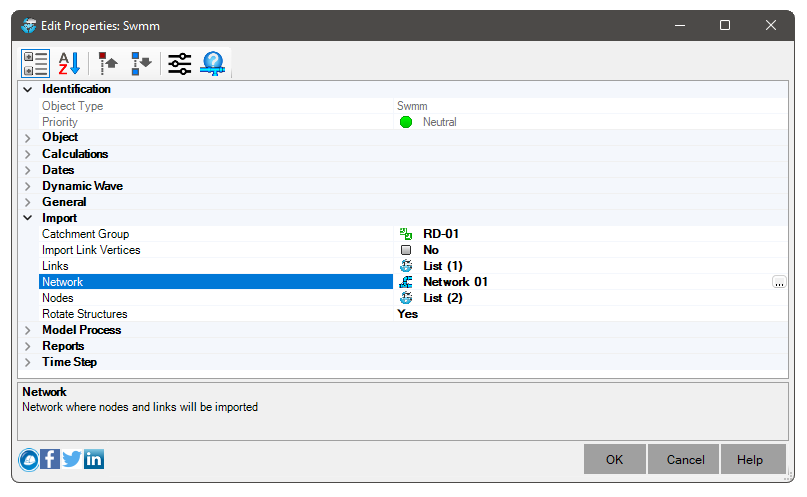
You must configure:
- Network - network name of
 drainage that will receive the various devices created
drainage that will receive the various devices created
On this network, you must also configure the following items:
- Materials List - list of
 materials associated with the network, for creating devices
materials associated with the network, for creating devices
- Reference surface - surface that will be associated with the created devices, to obtain elevation and excavation calculation
Note: it is not mandatory to set this parameter on import, but it may produce better results with regards to elevations/coverage
of the devices
Note, you must choose a network of type  drainage, or it will not be possible to proceed
drainage, or it will not be possible to proceed
- Nodes - SWMM type conversion table for SOLIDOS point devices:
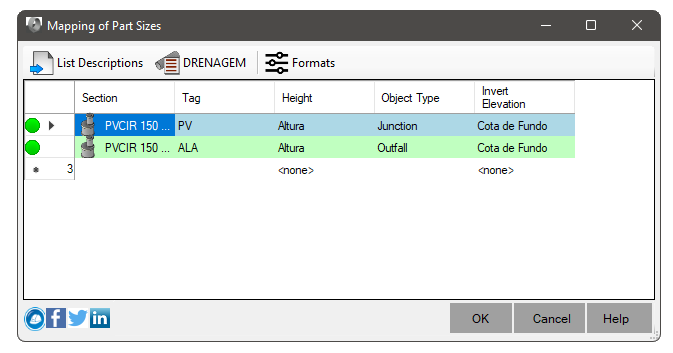
Some observations:
- SWMM does not keep much information about the type of node (manhole, connection box, manhole, etc.), nor does it consider them that way.
In many cases, the node is added to just receive catchments.
Anyway, this will be imported into SOLIDOS as a point device
- In the screen above, you can use the TAG property of SWMM, to assign some typical section specific to the device. If this property
is configured, during the import, SOLIDOS will check if the SWMM node has this property and if it is equal to the configured value
- Point devices usually have Height. This property can be inferred in SWMM at junctions, where the MaxDepth property exists. However, it's not much
safe to use. It is preferable to have a reference surface, as the nodes have at least the elevation of the raft (bottom elevation).
Therefore, you must inform the name of the property of your device that controls the Fund Quota. For the devices present in the catalog SOLIDOS standard, it is called SumpElevation
- If there is no possible association in this list, the program will check if there is at least one association where the type of object (Flow Divider, Junction, Outfall, Reservoir) is compatible and chooses it
- If unable to bind to any typical section, the node will not be imported and errors will be shown on the command line
- There is no information regarding the rotation of the device, type or material in the SWMM properties. Then create Constructors capable of dealing with these shortcomings.
- Rotate Nodes - Indicates that SOLIDOS will rotate the point devices so that their rotation is towards the longest linear device
- Links - SWMM type conversion table for SOLIDOS linear devices:

Some observations:
- In the image below, the Maximum Height property in SWMM is filled in the section properties of any tube:
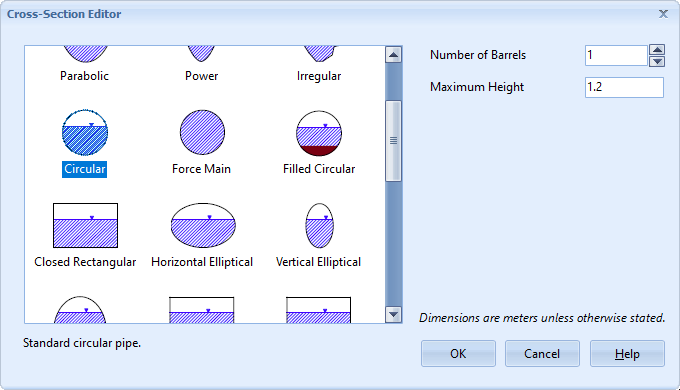
In the import table, the column Section Height must be filled in so that the typical section of SOLIDOS is considered.
It may be that the section is rectangular and in this case, it will also have the Section Width to fill
- If the height column is zeroed, the TAG column must contain a value and vice versa, or
the section will be considered if the object type matches. This can cause more than one section option for the same device
- Note: The Section column can only be populated with typical sections available in the BOM
assigned to the network. use the button
 Materials List to choose a Materials List
if necessary
Materials List to choose a Materials List
if necessary
- Click the button
 List Descriptions to import from the INP file, the TAG, the height and width of the section and types of objects contained in the file. This will make the search easier as it doesn't have to be done manually
List Descriptions to import from the INP file, the TAG, the height and width of the section and types of objects contained in the file. This will make the search easier as it doesn't have to be done manually
- Note, the length of links that is read into SWMM is ignored. In SOLIDOS, the actual extension will be used
- Import Vertices - For some reason, SWMM allows adding vertices to pipes, however, there is no information on how it handles the
elevation of these vertices.
These vertices will be converted to point devices in SOLIDOS, so configure the reference surface
in the network properties. As there is no specific node type, in the node mapping screen, you can include a
specific line where the object type is Joining and assign the word "vertex" in the tag column:
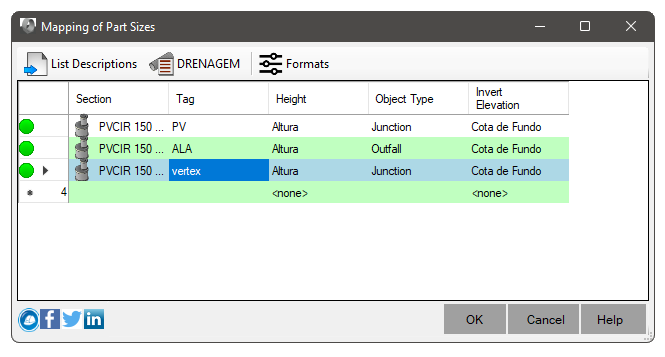
The import process assumes that the INP file is valid in SWMM. That is, it can be opened by the official SWMM program (build 5.1.015). syntax errors, nomenclature or any other error that prevents the network from being calculated can prevent the import into SOLIDOS and errors will be shown on the command line.
Settings referring to calculation options, curves and patterns settings will be imported and merged with the current SOLIDOS settings
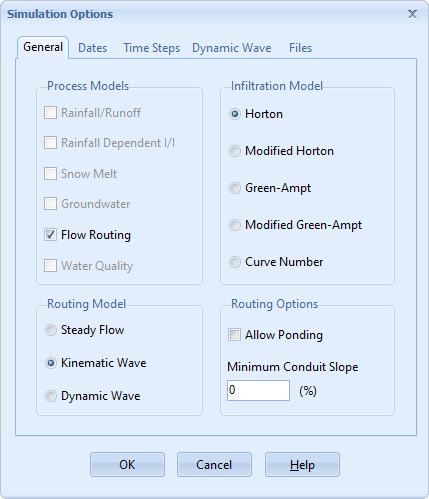
If devices already exist on the current network, they will be kept.
In SWMM, there is no distinction between networks, so the whole file will be imported into a single network.
 Note: SWMM API errors may occur during import.
These errors may or may not interrupt the import process.
If they stop, an error message will be displayed, which is listed in the topic SWMM Errors.
Note: SWMM API errors may occur during import.
These errors may or may not interrupt the import process.
If they stop, an error message will be displayed, which is listed in the topic SWMM Errors.
See also:
 Note: To be able to Use this command, a
license is required.
Note: To be able to Use this command, a
license is required.
![]() SWMMIMPORT Imports the INP file from
SWMMIMPORT Imports the INP file from ![]() SWMM for SOLIDOS, creating a network of
SWMM for SOLIDOS, creating a network of ![]() drainage
drainage






![]() Note: SWMM API errors may occur during import.
These errors may or may not interrupt the import process.
If they stop, an error message will be displayed, which is listed in the topic SWMM Errors.
Note: SWMM API errors may occur during import.
These errors may or may not interrupt the import process.
If they stop, an error message will be displayed, which is listed in the topic SWMM Errors.
![]() Note: To be able to Use this command, a
license is required.
Note: To be able to Use this command, a
license is required.